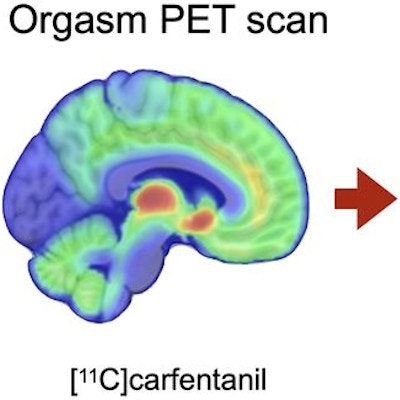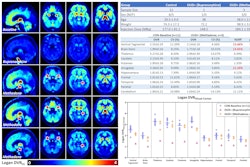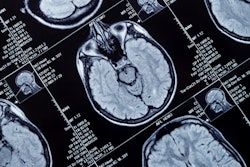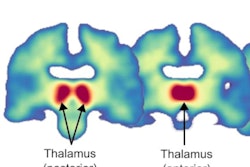
PET brain imaging has revealed a potential treatment target for men with orgasm disorders, with scans revealing that orgasms activate the brain's opioid system, according to a group in Finland.
Researchers led by psychologist Patrick Jern, PhD, of Abo Akademi University in Turku, used PET scans to visualize brain activity after orgasm in six men before and after they received stimulation from their partners. The findings provide in-human evidence that endogenous opioids are released after sexual arousal peaks, the authors wrote.
"We provide an indication that in vivo endogenous opioid release may be raised in the male hippocampus after orgasm," the authors wrote in a study published July 13 in the Journal of Nuclear Medicine. "Orgasm led to increased opioid release in the medial temporal lobe."
Endogenous opioids are produced and secreted by neurons and act in the brain and spinal cord to modulate neurotransmitters. Primarily, they are part of our brain's reward system, as their activity increases in sexual pleasure, the authors explained.
However, to date this understanding largely has been limited to animal studies, with the group using a carbon-11 (C-11) carfentanil PET radiotracer that binds to endogenous µ-opioid receptors (MOR) to study the activity in humans.
The researchers performed the PET scans in six men at baseline and after they received orgasm-leading stimulation by their female partners. The couple was led to a private room 30 minutes before the orgasm scan, with the partner instructed to time the participant's orgasm as close to the PET scan as possible.
Functional MRI (fMRI) scans were also performed to further delineate activated brain regions based on increases in blood flow. For these scans, participants were covered with a blanket, with the partner sitting next to the MRI bed, and the partners received instructions to stimulate the men in 10-second blocks. The mean time between the PET and MRI scans was about 15 days.
 A graphical abstract. Image courtesy of the Journal of Nuclear Medicine through CC BY 4.0.
A graphical abstract. Image courtesy of the Journal of Nuclear Medicine through CC BY 4.0.According to the results, PET data revealed higher nondisplaceable binding potential based on radiotracer uptake by MOR receptors in the hippocampus in the baseline versus orgasm scan. These changes paralleled hemodynamic responses in the hippocampus seen on the fMRI scans during penile stimulation. In addition, fMRI results implied a central role of the thalamus in modulating sexual arousal, the researchers wrote.
"To our knowledge, these data yield the most detailed picture, to date, of the functional and molecular brain basis of sexual arousal and climax in man and support the general role of the MOR system in modulating the calmness-arousal axis," the group wrote.
Ultimately, the finding should be considered preliminary until replicated, with the sample size in the study limited by the complex multimodal imaging setup; furthermore, brain responses during the orgasm phase in fMRI were not included because of head motion, the authors wrote.
Nonetheless, the study observed significant effects of opioid release in men after orgasm, and the study could have implications in patients with orgasmic disorders (such as premature ejaculation or delayed ejaculation), the authors wrote.
"Our data show that endogenous opioidergic activation in the medial temporal lobe is centrally involved in sexual arousal, and this circuit may be implicated in orgasmic disorders," the group concluded.
Read the full study in the Journal of Nuclear Medicine.





















